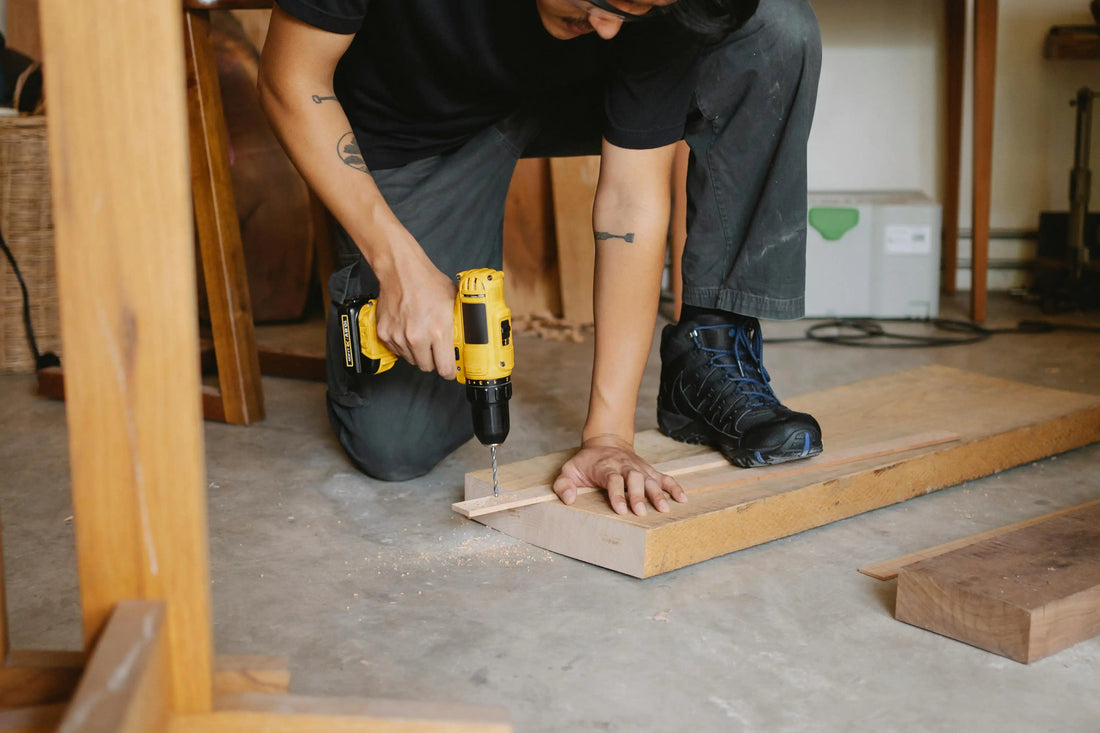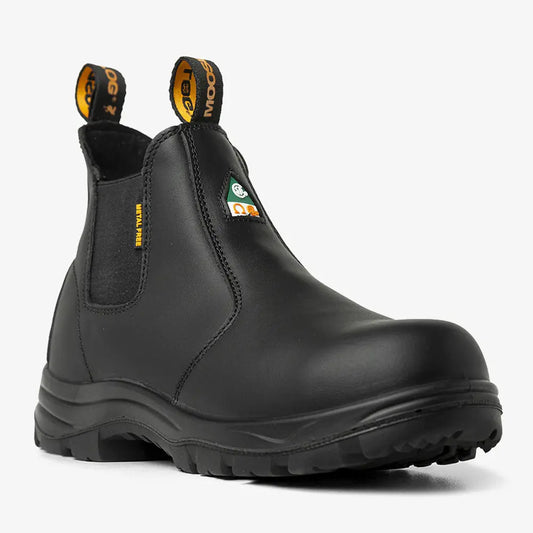
14 Must Have Safety Boot Features Every Worker Should Know
Why Understanding Safety Footwear Matters
When it comes to workplace safety, knowing your safety shoe features is critical. From toe protection to electrical hazard defense, each component plays a role in keeping your feet safe, comfortable, and compliant. In this guide, we’ll break down all the major features found in modern safety footwear, based on ASTM F2413-18 standards. Whether you’re buying for yourself or sourcing footwear for your crew, this guide will help you make informed decisions.
1. Steel Toe: Traditional, Trusted Protection
Steel toe boots are the most recognized type of safety footwear. Designed to protect against heavy falling or rolling objects, they are rated ASTM F2413-18 I/C. Common on construction sites, these boots deliver maximum impact resistance, but tend to be heavier than newer alternatives.
2. Composite Toe: Lightweight & Metal-Free
Made from non-metal materials like Kevlar, carbon fiber, or plastic, composite toe boots meet the same ASTM I/C requirements while being lighter and ideal for metal-free job sites. They offer thermal neutrality, making them popular in cold or hot environments.
3. Alloy Toe: Lighter Metal Option
Alloy toes use materials like titanium or aluminum. They’re 30-50% lighter than steel while still providing strong impact and compression resistance. Perfect for those needing the strength of metal with reduced fatigue.
4. Nano Toe: The Future of Toe Protection
Nano toes are ultra-light and ultra-thin. ASTM certified, they are 50% lighter than steel and 40% thinner than composite. They maintain strength without the bulk, helping reduce weight while maximizing space inside the boot.
5. Metatarsal Guard: Top Foot Shielding
These guards protect not just the toes, but the entire upper foot, specifically the metatarsal bones. Required in foundries and heavy industries, they defend against sparks, falling tools, and dropped parts. Look for ASTM F2413-18 Mt compliance.
6. Static Dissipative (SD): Protects Electronics & Components
SD-rated shoes reduce static buildup that can harm sensitive electronics or ignite volatile chemicals. Common in electronics manufacturing and paint shops, these are marked as ASTM SD10 or SD35.
7. Conductive Footwear: For High Static Environments
Designed to rapidly discharge static, CD-rated shoes are ideal in environments where explosive materials are handled. They should never be used near live circuits.
8. Electrical Hazard (EH): Defend Against Open Currents
EH-rated outsoles provide a safety barrier against open electrical circuits up to 600 volts. Popular among electricians, welders, and engineers. Look for the ASTM EH label.
9. Insulation: Cold Weather Ready
Insulated safety footwear is essential for outdoor work in Canadian winters. Measured in grams (e.g. 200g to 1200g), higher insulation means more warmth. Ideal for road crews, oilfields, and forestry workers.
10. High Heat Resistance: For Intense Conditions
Heat-resistant outsoles stand up to extreme temperatures (572°F, 752°F, or 932°F). Foundry workers, welders, and glass workers benefit from this feature.
11. Waterproofing: Stay Dry in Wet Conditions
Waterproof boots use sealed seams, membranes, or treated leather to keep feet dry. While not always permanent, proper maintenance can extend waterproof performance. Crucial for utility workers, landscapers, and delivery jobs.
12. Puncture Resistance: Protect the Midsole
Boots with puncture-resistant plates reduce the risk of stepping on nails, glass, or sharp metal. Certified under ASTM F2413-18 PR, this is a must-have for construction, demolition, and recycling jobs.
13. Flexible Construction: Move Naturally
Flexible boots reduce fatigue and allow for more natural movement. Often made from more pliable materials or with ergonomic design, these boots are suited for jobs requiring agility or long hours of walking.
14. Slip Resistance: For Wet or Oily Surfaces
Slip-resistant soles help prevent one of the most common workplace injuries. No boot is fully slip-proof, but ASTM-tested treads provide strong traction on slick floors. A must for kitchens, warehouses, and mechanics.
Final Thoughts: Choose the Right Features for Your Job Understanding safety footwear features is key to selecting the right pair for your job. Each feature serves a purpose, and in many workplaces, these aren't just preferences, but legal requirements.
At MooseLog, we take these standards seriously. All MooseLog safety boots meet or exceed ASTM and CSA certification, and our lightweight composite toe models like the MooseLog Timber offer top-level protection without compromising comfort.






